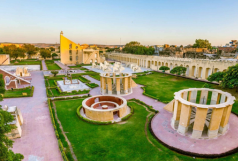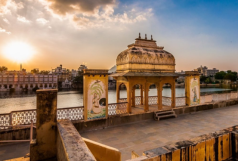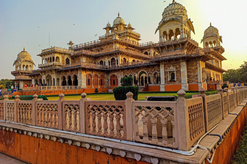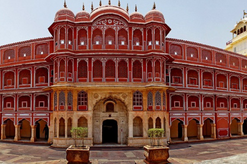The Best Time to Visit the Golden Triangle: Seasonal Travel Tips
The Golden Triangle is one of the most popular tourist circuits in India, offering a perfect blend of rich history, culture, and architectural wonders. This circuit connects three of India’s most iconic destinations: Delhi, Agra, and Jaipur. Each city boasts remarkable attractions and offers a unique glimpse into India’s royal and cultural heritage. In this blog, we will explore the best times to visit the Golden Triangle and provide useful seasonal travel tips to help you plan your trip effectively. Whether you’re traveling during the cooler months or the warmer season, there’s something for every traveler.
Planning a trip to India’s Golden Triangle can be an exciting journey, but choosing the right season to visit can make all the difference in your experience. While each season has its own charm, the ideal time to visit depends on your preferences for weather, crowds, and specific activities. Let’s take a closer look at the best time to explore this region.
Best Time to Visit the Golden Triangle
The Golden Triangle circuit includes Delhi, Agra, and Jaipur. The best time to visit these cities is during the cooler months of October to March. During this period, the weather is more pleasant, and you can fully enjoy sightseeing and outdoor activities without the intense heat. The months of November to February, especially, offer cooler temperatures, making them ideal for exploring the attractions without the discomfort of extreme temperatures.
Here’s a month-by-month guide to help you understand the weather and make the best decision for your travel plans:
1. October to March: The Peak Tourist Season
October to March is the most popular time to visit the Golden Triangle. During this period, the weather is mild and pleasant, with daytime temperatures ranging from 20°C to 30°C. This is perfect for sightseeing, as you can explore the magnificent forts, palaces, and monuments without feeling exhausted due to the heat. December and January are the coldest months, with temperatures occasionally dropping to 5°C at night. However, the days remain sunny and pleasant.
During this period, you’ll also find many festivals and cultural events in India. If you're a fan of festivals, planning your visit around Diwali (October-November), Holi (March), or the Jaipur Literature Festival (January) can provide you with an unforgettable cultural experience.
Day 1: Arrival in Delhi
Your Golden Triangle journey begins in Delhi, the capital city of India, known for its blend of historical landmarks and modern lifestyle. On Day 1, arrive in Delhi and check into your hotel. In the afternoon, embark on a sightseeing tour to explore the rich history and culture of this vibrant city.
Start your day with a visit to the iconic Red Fort, a UNESCO World Heritage Site, followed by a visit to the India Gate, a war memorial that pays homage to India's soldiers. Don't miss the Qutub Minar, the tallest brick minaret in the world, and the Lotus Temple, known for its unique lotus-shaped architecture.
Day 2: Delhi to Agra
On the second day, you will travel from Delhi to Agra, which is about a 3-4 hour drive. Agra is famous for the Taj Mahal, one of the Seven Wonders of the World. Upon arrival, check into your hotel and start your sightseeing tour with a visit to the magnificent Taj Mahal. This marble mausoleum, built by Mughal Emperor Shah Jahan in memory of his wife Mumtaz Mahal, is a symbol of eternal love.
After the Taj Mahal, visit the Agra Fort, another UNESCO World Heritage Site, and marvel at the stunning Mughal architecture. In the evening, enjoy a sunset view of the Taj Mahal from the Mehtab Bagh Garden, located on the opposite bank of the Yamuna River.
Day 3: Agra to Jaipur
On Day 3, leave Agra and head to Jaipur, the capital city of Rajasthan. The journey takes around 4-5 hours, so you may want to stop at Fatehpur Sikri, a UNESCO World Heritage Site, on the way. The ancient city was once the capital of the Mughal Empire and is known for its beautiful architecture and historical significance.
Upon reaching Jaipur, check into your hotel and begin your sightseeing tour with a visit to the iconic Amber Fort, a stunning hilltop fort that offers panoramic views of the city. Explore the fort's beautiful architecture, including the Sheesh Mahal (Palace of Mirrors), and learn about its fascinating history. Later, visit the Jantar Mantar, an astronomical observatory that houses the world’s largest stone sundial.
Day 4: Jaipur Sightseeing Tour
On the fourth day, continue exploring Jaipur, also known as the “Pink City” for its distinctive pink-colored buildings. Begin with a visit to the Hawa Mahal, or Palace of Winds, a stunning palace with over 900 windows designed to allow royal women to observe street life without being seen.
Next, head to the City Palace, a beautiful blend of Mughal and Rajput architecture, and explore its museums and courtyards. Don't miss a visit to the Jal Mahal (Water Palace), an exquisite palace located in the middle of Man Sagar Lake. In the evening, enjoy some traditional Rajasthani cuisine at one of the city's local restaurants.
Day 5: Jaipur Departure
On the final day of your Golden Triangle tour, you can visit some of the local markets for shopping and souvenirs. The Johari Bazaar and Bapu Bazaar are perfect for buying traditional Rajasthani handicrafts, jewelry, and textiles.
Depending on your departure time, you can also visit the Galtaji Temple, a historic Hindu temple complex known for its natural springs. Afterward, you will be transferred to the Jaipur airport or railway station for your onward journey.
Conclusion
In just 5 days, the Golden Triangle offers a perfect blend of history, culture, and architectural beauty. From the iconic Taj Mahal in Agra to the majestic forts of Jaipur, this trip will give you an unforgettable experience of India’s royal heritage. Book your sightseeing cab in Jaipur today to make your Golden Triangle journey comfortable and convenient!
























